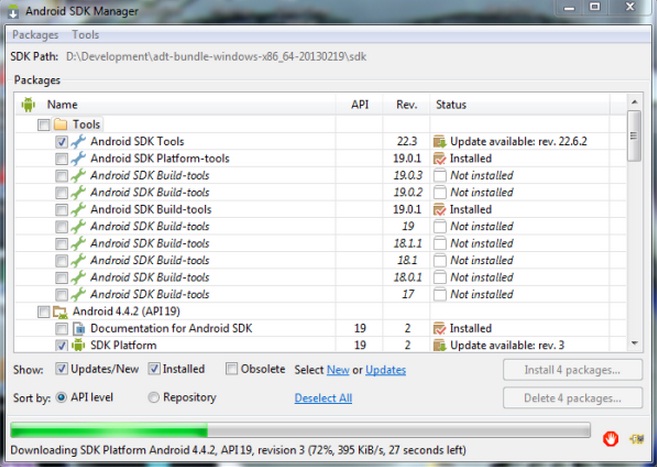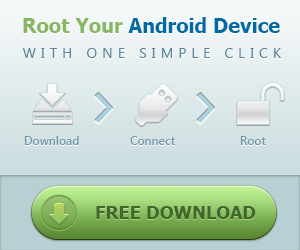- Sdk Manager Location Mac
- Sdk Tool For Mac
- Sdk Manager Mac Path
- Android Sdk Install For Mac
- Download Sdk Manager For Mac
The sdkmanager is a command line tool that allows you to view, install,update, and uninstall packages for the Android SDK. If you're using AndroidStudio, then you do not need to use this tool and you can instead manage yourSDK packages from the IDE.
The sdkmanager tool is provided in the Android SDK Tools package(25.2.3 and higher) and is located inandroid_sdk/tools/bin/.
Android SDK Tools for Mac. Android SDK Tools for Mac. Free Open Handset Alliance Mac/OS X 10.4 Version Revision 24.4.1 Full Specs. Download Now Secure Download. Publisher's Description. Your new SDK installation already has the latest version. Make sure you keep. This guide explains how to use the Xamarin Android SDK Manager in Visual Studio and Visual Studio for Mac. Download android sdk mac, android sdk mac, android sdk mac download free. From Open Handset Alliance: Android is an open, mobile-phone platform that is currently under development. The Android developers kit will allow you to develop. The size of our Mac stack Zip is about 26.1 MB. System Requirements. The Zoom Mac SDK is supported in MacOS 10.6 or higher. For sample code, please refer to the Zoom SDK Sample Directory. More Information. For a list of new features.
Sdk Manager Location Mac
Usage
You can use the sdkmanager to perform the following tasks.

List installed and available packages
Use the channel option to include a package from a channel up to andincludingchannel_id. For example, specify the canary channel to list packagesfrom all channels.
--channel=0 or remove the --channeloption entirely.Install packages
The packages argument is an SDK-style path as shown withthe --list command, wrapped in quotes (for example,'build-tools;29.0.2' or'platforms;android-28'). You can pass multiple packagepaths, separated with a space, but they must each be wrapped in their own set ofquotes.
For example, here's how to install the latest platform tools (which includesadb and fastboot) and the SDK tools for API level 28:
Alternatively, you can pass a text file that specifies all packages:
The package_file argument is the location of a text file in whicheach line is an SDK-style path of a package to install (without quotes).
To uninstall, simply add the --uninstall flag:
To install CMake or the NDK, use the following syntax:
For example, use the following command to install the specified NDK version regardlessof which channel it is currently on.
Update all installed packages
Options

The following table lists the available options for the above commands.
| Option | Description |
|---|---|
--sdk_root=path | Use the specified SDK path instead of the SDK containing this tool |
--channel=channel_id | Include packages in channels up to and including channel_id. Available channels are:
|
--include_obsolete | Include obsolete packages in the package listing or package updates. For use with --list and --update only. |
--no_https | Force all connections to use HTTP rather than HTTPS. |
--verbose | Verbose output mode. Errors, warnings and informational messages are printed. |
--proxy={http | socks} | Connect via a proxy of the given type: either http for high level protocols such as HTTP or FTP, or socks for a SOCKS (V4 or V5) proxy. |
--proxy_host={IP_address | DNS_address} | IP or DNS address of the proxy to use. |
--proxy_port=port_number | Proxy port number to connect to. |
REPO_OS_OVERRIDEenvironment variable to either 'windows', 'macosx', or 'linux'.Overview
Prerequisites
To get started, you need:



- A registered IBMid account. You can request a new IBMid account from https://idaas.iam.ibm.com.
- Java SE Development Kit (version 8.0 or later) available from http://www.oracle.com/technetwork/java/javase/downloads/jdk8-downloads-2133151.html.
- NodeJS available from https://nodejs.org/en/download/ with NPM version 5.4.1.
- Ruby available from https://www.ruby-lang.org/en/documentation/installation/.
Note: If you are using the SDK Manager on a Windows OS, please see the Getting started with the SDK Manager for Windows tutorial instead.
Step-by-step
Downloading and starting the SDK Manager in MacOS X or Linux
- Download the SDK Manager folder from GitHub by selecting the Clone or download option here: https://github.com/ibm-watson-cxa/SDK_Tools
- Select Download ZIP and the SDK Tools will download.
Note: You cannot download only the SDK Manager. This will download all the SDK Tools. The sdkmanager folder can be found within the SDK Tools folder. - Open a Terminal Window and go to your chosen directory (this may be in your Downloads folder on your system).
- Run the command chmod 755 minstrument.sh to make the application launcher executable.
- Start the application by using the command ./minstrument.sh
- Log in with your IBMid credentials.
- Press Enter to accept the license.
Updating the SDK
Download the most current package with both the Acoustic Experience Analytics (Tealeaf) and Digital Analytics SDKs, input the command update -sdk cxa
- To download the Acoustic Experience Analytics (Tealeaf) SDK alone, input the command update -sdk tealeaf
- To download the Digital Analytics SDK alone, input the command update -sdk da
Integrating the SDK
Integrate the SDK into your mobile application by using the command ibmsetup -app -sdk <tealeaf/da>
All setup commands require you to specify which SDK is being setup.
- A sample command on Linux/MacOS X for an Android application is ibmsetup -sdk tealeaf -appKey XXXXXXXXXXXX -postMessageUrl https://websitename.com/XXXXXXX -killSwitchUrl https://websitename.com/XXXXXXXX -app /home/user/helloworldapp/app
Note: A path to your application directory under the Android Studio project is needed. - A sample command on MacOS X for an iOS application is ibmsetup -sdk tealeaf -appKey XXXXXXXXXXXX -postMessageUrl https://websitename.com/XXXXXXX -killSwitchUrl https://websitename.com/XXXXXXXX -app /Users/user/helloworldapp/helloworldapp.xcodeproj -target MyTealeafproject
Note: A path to the .xcodeproj is needed. Also, all iOS application auto-instrumentation requires a specific target.
Note: The ibmsetup command is an alpha feature and might not work for some mobile applications. Review your application class and manually tweak the SDK configuration to test other features like Replay and Overstat.
Â
Required Parameters
- -app
- -target (only for iOS)
- -sdk
Optional Parameters
However, without these parameters data won’t be sent and Replay won’t function, but they will not cause an error.
- -postMessageUrl
- -appkey
- -killswitch
- A sample command on Linux/MacOS X for an Android application is ibmsetup -sdk tealeaf -appKey XXXXXXXXXXXX -postMessageUrl https://websitename.com/XXXXXXX -killSwitchUrl https://websitename.com/XXXXXXXX -app /home/user/helloworldapp/app
Troubleshooting the SDK Manager.
These procedures help identify and may fix common issues you could experience with the SDK Manager on Windows, MacOS X, or Linux.
The following table provides solutions to SDK Manager common issues:
Error Solution Exception in thread 'main' java.lang.RuntimeException: java.io.IOException: Cannot run program 'node': error=2,linebreak pdf No such file or directory at com.ibm.commerce.sdk.util.PlatformDependencyUtil.isNodeInstalled(PlatformDependencyUtil.java:36)This error occurs when you have not installed the node.js source code. To download and install, please visit Download Node.js ( after logging in successfully )
Password: npm ERR! cb() never called!npm ERR! This is an error with npm itself. Please report this error at:
npm ERR! <https://github.com/npm/npm/issues>npm ERR! A complete log of this run can be found in:
npm ERR! /root/.npm/_logs/2017-12-13T02_08_57_581Z-debug.logMake sure you are running NPM version 5.4.1 Â
Expected outcome
Sdk Tool For Mac
You can use the SDK Manager command line processes to complete tasks.
Sdk Manager Mac Path
The help command opens a Glossary of Commands and their functions. Thehelp <command_of_interest> command explains detailed usage of each command.
Android Sdk Install For Mac
| Command | Usage |
|---|---|
| exit | Exit |
| listsdks | Shows a list of Acoustic SDKs |
| update | Updates your SDK |
| outdated | Checks if your SDK needs to be updated |
| upgrade | Upgrades the Mobile SDK Installer. Note: This command does not update the respective Acoustic SDKs. |
| package | Packages the Acoustic SDK Release in a .zip file. |
| ibmsetup | Setup and Integrate an Acoustic Mobile SDK into your Mobile App Note: This is an alpha feature and might not work for some mobile applications. Review your application class and manually tweak the SDK configuration to test other Acoustic Tealeaf features like replay and overstat. |
| help | Displays help information for available commands. |
Download Sdk Manager For Mac
Â